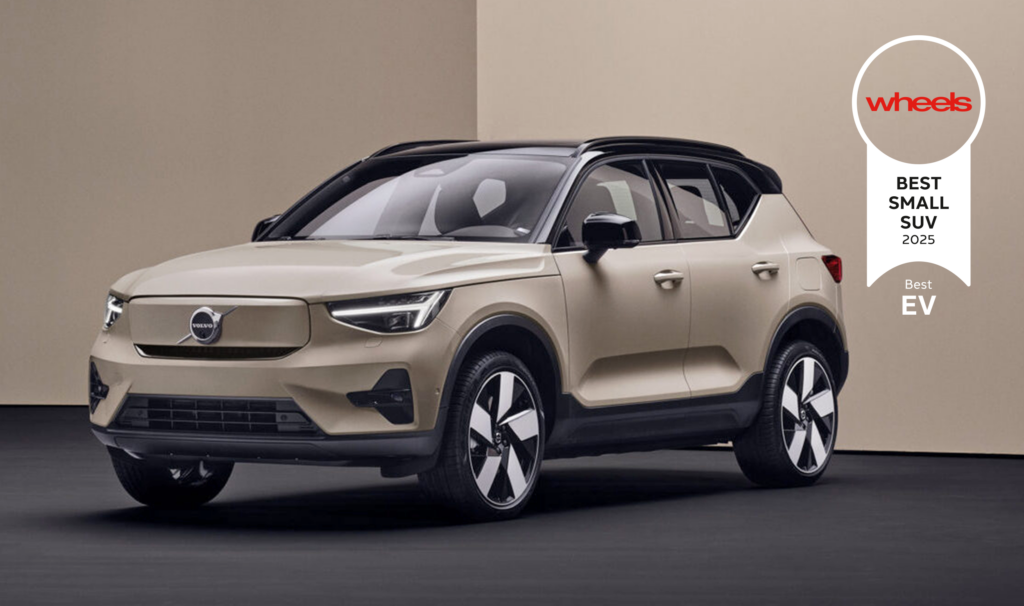The Contenders
- Chery Tiggo 4 Pro
- Kia EV3
- Chery Omoda E5
- MG ZS EV
- BYD Atto 3
- Zeekr X
- MG ZS
- MG ZS Hybrid+
- MG ZST
- GWM Haval Jolion
Winner: Chery Tiggo 4 Pro

- Price: From $23,990 drive away (Urban)
- Drivetrain: 1.5L turbo 4-cylinder petrol, 108kW/210Nm, CVT auto
- Combined fuel economy, CO2 emissions, fuel type: 7.4L/100km, 166g/km, 91RON
- Warranty: Seven-year/unlimited km, up to seven years of roadside assistance if serviced at Chery
- Five-year service cost: $1,400 ($280 per year)
Rating
| Driving | |
|---|---|
| Interior | |
| Practicality | |
| Overall value |
Strengths
- Amazing value for money
- More practical than its size suggests
- Excellent warranty and service package
Weaknesses
- Thirsty on paper and in the real world
- Soft driving experience
- Overactive safety systems
It’s only just been launched on the market, but the Chery Tiggo 4 Pro is already making waves in the Australian new car market, with 1,018 units of the Tiggo 4 Pro sold in January 2025 alone. That’s a little surprising given that January was only its second full month on sale in Australia. So what appeals to buyers about the Tiggo 4 Pro?
Well, it’s undoubtedly an excellent value-for-money proposition. Pricing starts at just $23,990 for the entry-level Urban – that’s drive away, as well – with the top-spec Ultimate adding only $3,000 to the price. Even with premium paint, the most expensive Tiggo 4 Pro is comfortably under the $30,000 threshold – and unlike the pricing of most rivals quoted here, that includes all on-road costs.
The Tiggo 4 Pro’s seven-year/unlimited km warranty with up to seven years of roadside assistance is long, too, while the first five years of servicing only costs $1,400. In addition to that, even the entry-spec car is well equipped with features like automatic LED lighting, a dual 10.25-inch layout and dual-zone automatic climate control.
Away from the value equation, there’s still lots to like about the Tiggo 4 Pro. Its cabin is good quality with lots of soft touch surfaces, it’s more practical than its small size suggests with a 380-litre boot (1,225L with the rear seats folded) and it’s powered by a gutsy turbocharged 1.5-litre engine. It was also recently awarded a five-star ANCAP safety rating with impressive scores in each category.
Only the Tiggo 4 Pro’s overactive safety assist, too-soft driving experience and thirsty drivetrain count against it. But if you’re value focused, the Chery Tiggo 4 Pro is a great option and we expect even larger sales numbers from it this year.
Kia EV3
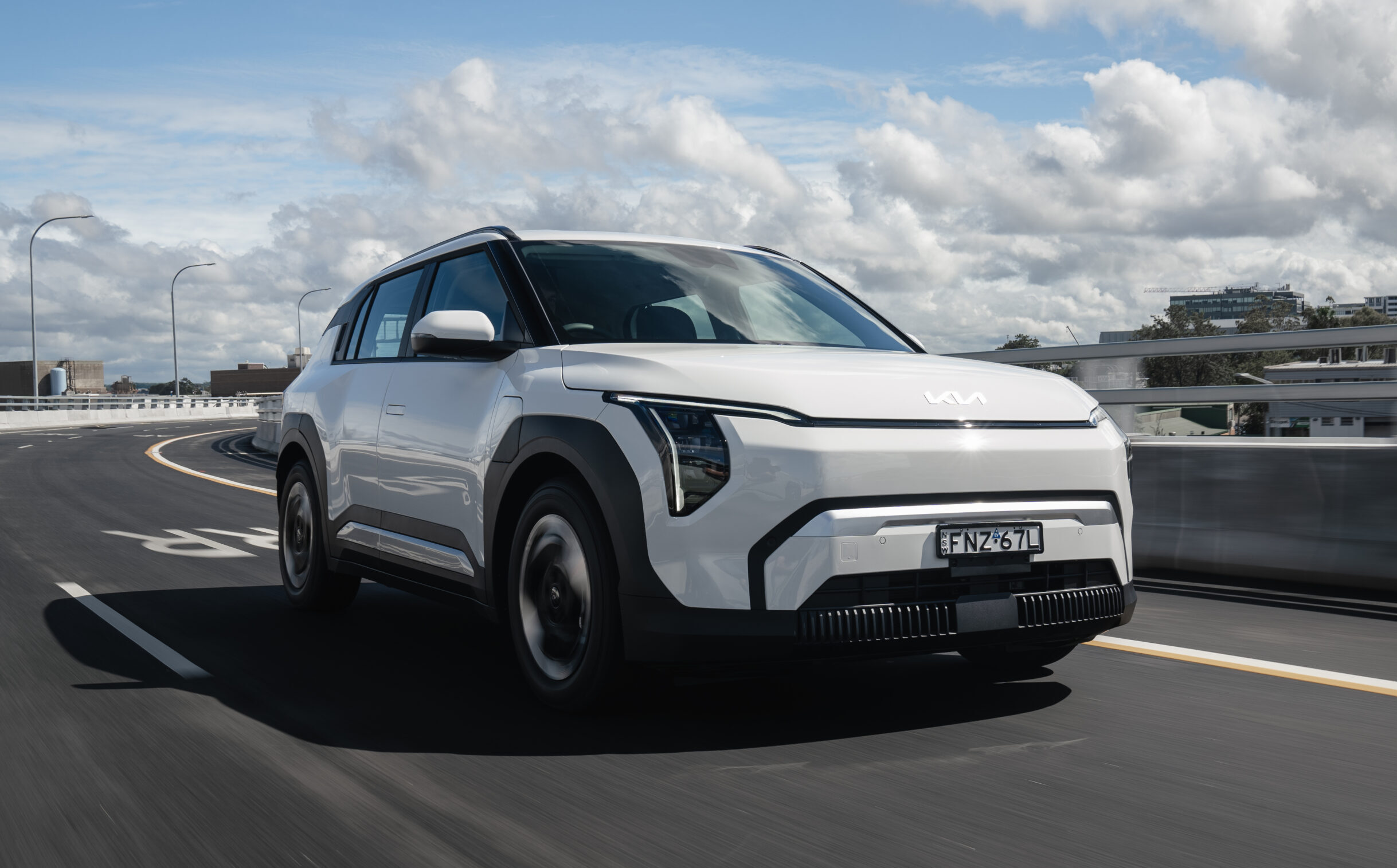
- Price: From $48,990 drive away (Air Standard Range)
- Drivetrain: 150kW/283Nm motor, 58.3-81.4kWh battery
- WLTP range, peak charging speed: 436km-604km, 127kW
- Warranty: 7-year/unlimited km, 7-year/150,000km battery warranty, 12 months of roadside assistance renewed with each Kia service
- Six-year service cost: $1,285 ($257 per year)
| Driving | |
|---|---|
| Interior | |
| Practicality | |
| Overall value |
While the EV6, EV9 and EV5 have come before it, Kia’s new EV3 electric small SUV looks to be the most compelling yet as it’s well priced, characterful and practical for its size. Priced from $48,990 drive away (depending on location), the EV3 has lowered the price of entry to an electric Kia by around $7,000 and has made the brand more accessible and appealing to those who want a cheaper and/or smaller EV.
Inside the EV3 is an almost-identical dashboard to other recent Kia products like its larger electric siblings and the new K4 small car, with dual 12.3-inch displays and a small 5.0-inch touchscreen for the dual-zone climate control in the middle of them. The EV3’s cabin is practical with lots of storage space, while the 460-litre boot is healthy for its size.
For now, there’s only a single 150kW electric motor variant available in Australia, though a dual-motor variant is said to be coming later this year with more power for those wanting more pep. Like other recent Kia models, the EV3 has been Australian-tuned for our market for greater ride comfort over our rubbish roads.
The peak charging speed is reasonable, while the range is excellent. Also excellent are the EV3’s servicing costs, which are far less than we’re used to from the brand – and Kia’s excellent seven-year warranty is still present.
It’s only just gone on sale in Australia, but we think that the Kia EV3 is going to sell well locally. It’s well priced at the entry point to the range, it’s cute to look at, offers a good range and performance and is inexpensive to service.
Chery Omoda 5

- Price: From $24,490 plus on-road costs (FX)
- Drivetrain: 1.5-litre turbocharged 4-cylinder petrol, 108kW/210Nm, CVT auto; Chery Omoda E5 – 150kW/340Nm single electric motor
- Combined fuel economy, CO2 emissions, fuel type: 6.9L/100km, 164g/km, 91RON
- Warranty: Seven-year/unlimited km, seven years of roadside assistance if serviced at Chery
- Five-year service cost: $1,400 ($280 per year)
Rating
| Driving | |
|---|---|
| Interior | |
| Practicality | |
| Overall value |
Strengths
- Well priced and well equipped
- Great warranty and cheap servicing program
- Futuristic styling and interior layout
Weaknesses
- Short 10,000km service intervals
- Overactive active safety features
- CVT dulls acceleration
The Omoda 5 was the product that Chery utilised to re-launch in Australia in early 2023. The brand’s first truly global product, the Omoda 5 is what you’d expect from the Chery brand: well priced, well equipped, contemporary styling and covered by a long warranty. And with over 6,100 sales in 2024, clearly Australians agree.
Since it was released, the Omoda 5 has seen a range shuffling with extra value added in the form of a new entry-level FX model, which is priced from $24,490 plus on-road costs. It keeps the upper-spec models’ turbocharged engine and safety features, including autonomous emergency braking, lane keeping assistance, adaptive cruise control and blind-spot monitoring with rear cross-traffic alert.
Like the smaller Tiggo 4 Pro, the quality inside the Omoda 5 impresses with plenty of soft touch materials used throughout the cabin, and the dashboard layout is modern as well. In-car tech is handled through a dual-10.25 inch set up for the infotainment and driver’s display, and while both systems can take some getting used to, the screen quality is good.
What’s not so good about the Omoda 5 is the intrusiveness of the active safety systems such as the lane-keeping assistance and active speed monitoring. Plus, the steering is very light, which accentuates the indecisive lane keep assist. While it’s well planted, the ride quality can also be a bit too jumpy thanks to the soft suspension set-up. Plus, its 360-litre boot isn’t that big and is otherwise featureless, while the rear seat is tight for taller folks.
Still, the Omoda 5 is excellent value for money. It’s well equipped, cheap to service, covered by a long warranty, looks exotic and is reasonably practical as well. No wonder so many have found favour with Australians.
MG ZS EV

- Price: From $36,888 drive away (Essence)
- Drivetrain: 130kW/280Nm (Essence) or 115kW/280Nm (Long Range) electric motor, 51.1-72.6kWh battery
- WLTP range: 320km-440km
- Warranty: 10-year/200,000km, 12 months of roadside assistance renewed with each MG service
- Six-year service cost: $1,998 ($333 per year)
| Driving | |
|---|---|
| Interior | |
| Practicality | |
| Overall value |
Things we like
- Excellent value for money
- Good quality and practical cabin
- Lots of standard equipment
Not so much
- Range could be better
- Almost sold out
- Odd driving position
MG’s first electric car in Australia, the popular ZS EV, is not long for this world. Priced at a special $36,888 drive away for both the base Essence and upper-spec Long Range to clear stock ahead of a new model later in the year, the ZS EV is currently excellent buying at a bargain price.
The ZS EV models use a front-mounted electric motor, with the Essence making 130kW/280Nm, though the Long Range makes slightly less power at 115kW/280Nm. Both offer peppy performance, especially in urban situations. The ZS EV’s ride quality isn’t bad either, though it can feel a bit underdamped in larger bumps.
The cabin of the ZS EV is nearly identical to the ZS that debuted almost 10 years ago, so it doesn’t feel that modern, but the quality is reasonable and it’s practical as well. The 10.25-inch touchscreen is well equipped as well, with features like sat-nav, smartphone mirroring and even access to the brand’s ‘iSmart’ smartphone app.
The ZS EV’s cabin is also practical and can carry four adults comfortably. The rear seat is roomy enough for two, especially in headroom, and the 359-litre boot is reasonable as well. Covering the ZS EV is a 10-year/200,000km warranty and the service cost for the first six years costs just $1,998.
Overall, the MG ZS EV was a commendable first effort for the brand, and it’s no surprise to see that it’s sold well locally. Now in run-out at a bargain price, the ZS EV’s appeal is even stronger – especially now that the Long Range model is priced the same as the Essence with the smaller battery. While it’s not the newest car around, the ZS EV still offers a good range, a practical cabin and reasonable performance as well.
BYD Atto 3
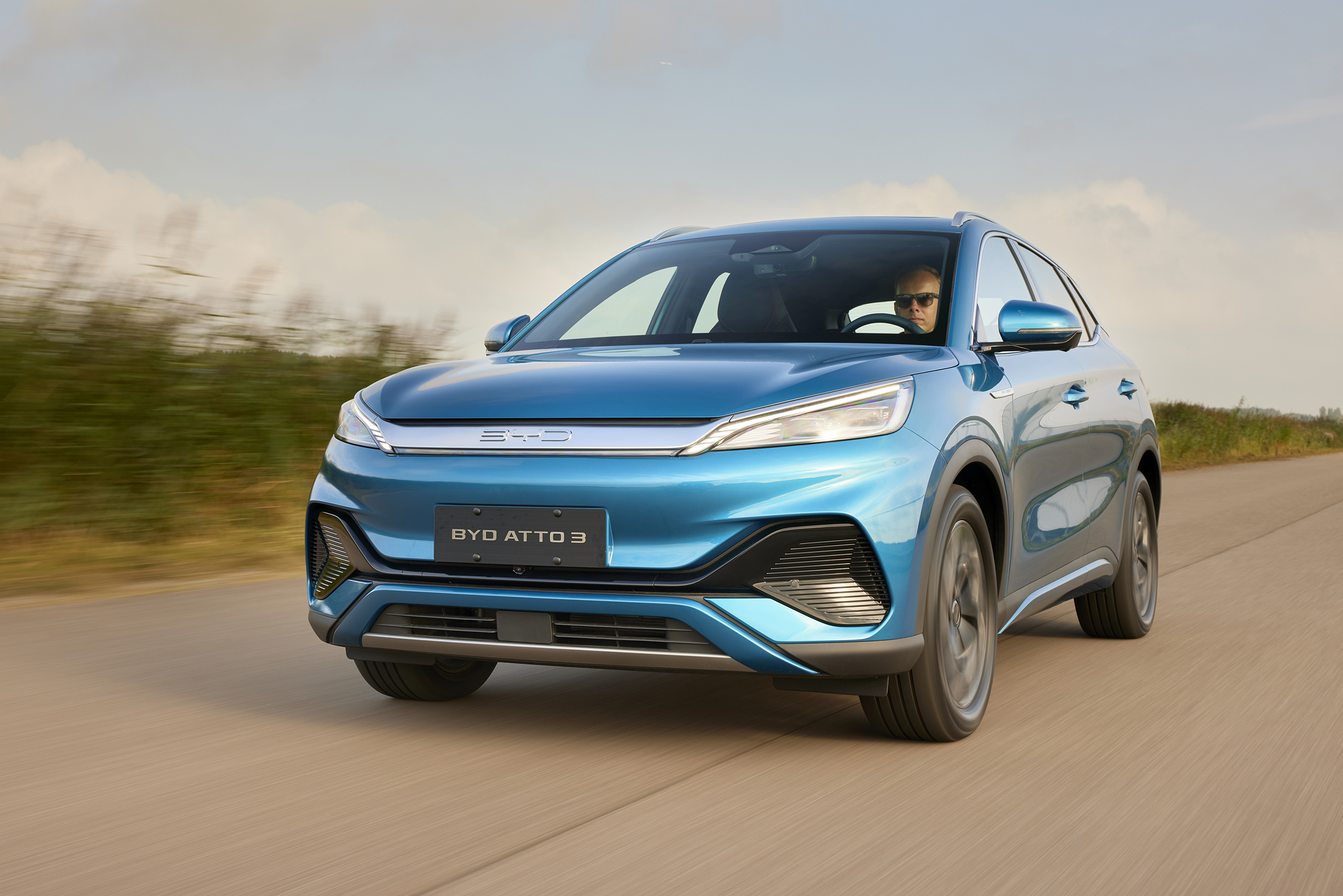
- Price: From $39,990 plus on-road costs (Essential)
- Drivetrain: 150kW/310Nm electric motor, 49.9-62.2kWh battery
- WLTP range: 345km-420km
- Warranty: 6-year/150,000km, 8-year/160,000km battery warranty, 12 months of roadside assistance renewed with each BYD service
- Five-year service cost: $1,628 ($325 per service)
| Driving | |
|---|---|
| Interior | |
| Practicality | |
| Overall value |
Things we like
- Excellent value for money
- Good quality and practical cabin
- Lots of standard equipment
Not so much
- Essential’s range could be better
- Big price gap between the two models
- Rubbish standard tyres
There’s a brand currently on sale in Australia making big waves, and this is the car that started it all for them locally. Of course, we’re talking about BYD and its Atto 3 small electric SUV, which has sold solidly since its introduction locally in 2022.
Since its launch, the Atto 3’s entry price has fallen to just $39,990 plus on-road costs for the new entry-level Essential model, and it’s pricing that attracted buyers to the Atto 3 in the first place. But there’s more to the model, including a long standard equipment list, an attractive and good quality cabin, and solid practicality.
The Atto 3 offers a choice of two batteries: a 49.9kWh one in the base Essential or a larger 62.2kWh unit in the upper-spec Premium. Range is WLTP-rated at 345km for the Essential and 420km for the Premium, with DC fast charging at up to 70kW in the Essential and 88kW in the Premium. Both variants use a 150kW/310Nm electric motor that drives the front wheels, and performance is peppy rather than brisk, but that’s fine.
The Atto 3’s driving dynamics aren’t incredible either, it must be said, which is something that would be better without the standard Atlas Batman tyres. But the Atto 3 is comfortable to drive and offers good bump suppression. The Atto 3’s cabin is also funky to look at, with a huge 12.8-inch touchscreen that rotates and the quality is pretty good as well.
Overall, the BYD Atto 3 is a solid entrant to the small SUV segment and it’s no surprise that it has sold well locally: it’s very well priced, good quality, reasonable performance, practical and covered by an above-average warranty. The new Essential trim has made it even better priced than before, yet it’s still well equipped across the range.
Zeekr X

- Price: From $49,900 plus on-road costs (RWD)
- Drivetrain: 200kW/343Nm (RWD) or 315kW/543Nm (AWD) electric motor, 66kWh battery
- NEDC range, peak charging speed: 470-540km, 150kW
- Warranty: 5-year/unlimited km, 8-year/160,000km battery warranty, 5 years of roadside assistance
- Six-year service cost: $2,800 ($466 per year)
| Driving | |
|---|---|
| Interior | |
| Practicality | |
| Overall value |
Things we like
- Futuristic design in and out
- Good quality and practical cabin
- Lots of standard equipment
Not so much
- Everything controlled through touchscreen
- Overbearing safety features
- Expensive service pricing
As we’ve seen with both the Volvo EX30 and Smart #1 and #3 cousins, the Zeekr X – which uses the same platform and mechanicals as those cars – features a 66kWh battery that can be charged at up to 150kW with either a 200kW single motor or 315kW dual-motor drivetrain. So in that case, what separates the Zeekr from its cousins?
The Zeekr is undoubtedly designed to be sharper – while the Smarts are cute and European and the Volvo is quite Nordic in its look, the Zeekr is more futuristic in appearance. The same sort of futuristic vibe extends to the cabin where the big touchscreen dominates and thankfully, unlike the EX30, there’s also a driver’s display.
Like the Smart twins, the Zeekr X is less sporty than the EX30 and that’s helped by the 100mm-longer wheelbase for extra ride comfort. But it still drives assuredly and even though some of its active safety features can be irritating, they’re much better tuned than a lot of other new cars.
The Zeekr’s cabin is warm and inviting, and more spacious than you might first think given its small dimensions. Centre of the cabin is a 14.6-inch touchscreen that’s mostly easy to use and well featured, while we also quite like the light colouring which makes it feel airy.
Overall, we think the Zeekr X has definite appeal in the new car market. While the brand isn’t yet as well known as its cousins, it impresses with funky design, great quality and a solid driving experience. The warranty could be longer and it could be less expensive to service, but we think it’s overall worthy of a test drive.
MG ZS
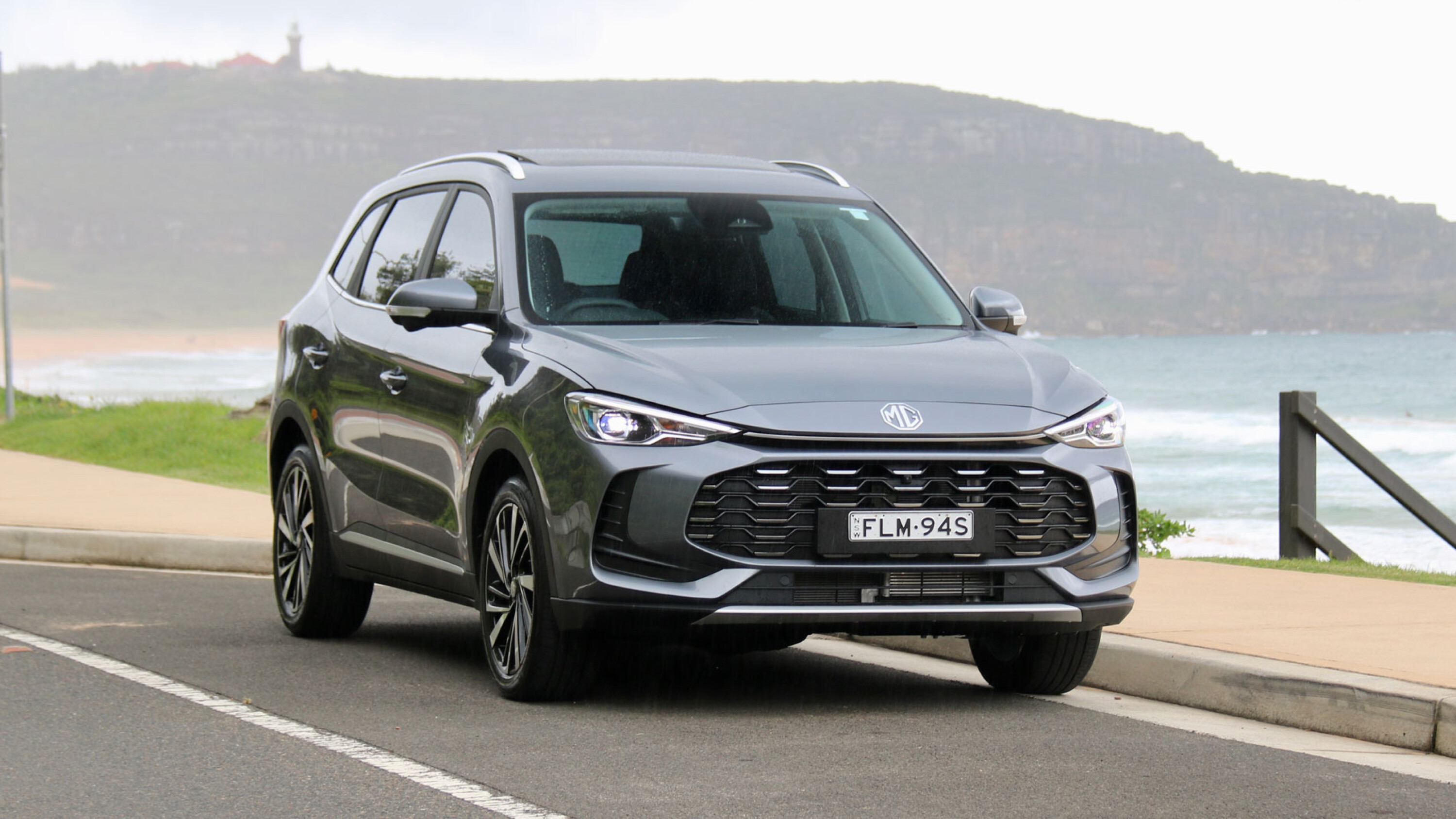
- Price: From $26,990 drive away (Excite)
- Drivetrain: 1.5-litre or 1.5-litre turbocharged 4-cylinder petrol, 81kW/140Nm or 125kW/275Nm, CVT auto
- Combined fuel economy, CO2 emissions, fuel type: 6.7-6.9L/100km, 157-161g/km, 91RON (1.5L NA) or 95RON (1.5T)
- Warranty: 10-year/250,000km, 12 months of roadside assistance
- Five-year service cost: $2,637 ($527 per year)
| Driving | |
|---|---|
| Interior | |
| Practicality | |
| Overall value |
Strengths
- A big improvement on the old ZS
- Cabin presentation and practicality
- Still excellent value in its segment
Weaknesses
- Petrol engines aren’t as well-rounded as the hybrid
- No steering wheel reach adjustment
- Expensive service pricing
The second-generation MG ZS first launched in Australia in November 2024 in Hybrid+ spec priced from $33,990 drive away, but the petrol-powered models have just arrived and lower the price of entry significantly to just $26,990 drive away.
While not as cheap as the ZST, the new ZS is better equipped and it’s also larger and more refined. The cabin is more modern with higher quality materials, while the growth spurt has allowed for a larger rear seat and boot – the size has increased from a healthy 359 litres to a large 443L with the seats up, for example.
The infotainment system has upgraded to MG’s latest unit, which is much easier to use than the system in the ZST and while it doesn’t feature smartphone mirroring that’s wireless, it’s still got sat-nav, digital radio and access to the company’s ‘iSmart’ live services so that owners can lock and unlock the car, turn on the climate control to warm or cool the car before getting in and even check where the car is.
On the road, the new ZS presents a compelling option in the small SUV segment as it’s more comfortable than the ZST and CX-3, and is a generally relaxing car to drive. The naturally aspirated 1.5-litre petrol engine is not fast, but should give most buyers enough performance. The only annoyance comes from the lack of steering wheel reach adjustment – just like the ZST – and the overactive speed limit assistance, which makes a fuss if you travel even 1km/h above the speed limit.
But the new MG ZS is a big improvement on the car it replaces and in the sub-$30,000 small SUV segment, does quite well overall. It offers more space than most rivals, more equipment than a lot of rivals, an industry-leading warranty and although service pricing isn’t cheap, it now matches the class leaders at 15,000km intervals.
MG ZS Hybrid+

- Price: From $33,990 drive away (Excite)
- Drivetrain: 1.5L 4-cylinder hybrid, 158kW/465Nm, 3-speed CVT auto
- Combined fuel economy, CO2 emissions, fuel type: 4.7L/100km, 110g/km, 95RON
- Warranty: 10-year/250,000km, one year of roadside assistance
- Five-year service cost: $1,995 ($399 per year)
| Driving | |
|---|---|
| Interior | |
| Practicality | |
| Overall value |
Things we like
- Big improvement on the previous ZS
- Enlarged size adds more interior space
- Hybrid is punchy and efficient
Not so much
- Intrusive active safety systems
- Too much reliance on touchscreen
- Finicky steering wheel buttons
The second-generation MG ZS first launched in Australia in November 2024 in Hybrid+ spec priced from $33,990 drive away. Petrol-powered models have just arrived and lower the price of entry significantly to just $26,990 drive away, but we think the Hybrid+ is worth the extra spend.
While not as cheap as the ZST, the new ZS is better equipped and it’s also larger and more refined. The cabin is more modern with higher quality materials, while the growth spurt has allowed for a larger rear seat and boot – the size has increased from a healthy 359 litres to a large 443L with the seats up, for example.
The infotainment system has upgraded to MG’s latest unit, which is much easier to use than the system in the ZST and while it doesn’t feature smartphone mirroring that’s wireless, it’s still got sat-nav, digital radio and access to the company’s ‘iSmart’ live services so that owners can lock and unlock the car, turn on the climate control to warm or cool the car before getting in and even check where the car is.
On the road, the new ZS Hybrid+ presents a compelling option in the small SUV segment as it’s more comfortable than the ZST and CX-3, and is a generally relaxing car to drive. The 1.5-litre hybrid drivetrain is powerful making 158kW, yet efficient rated at just 4.7L/100km. The only annoyance comes from the lack of steering wheel reach adjustment – just like the ZST – and the overactive speed limit assistance, which makes a fuss if you travel even 1km/h above the speed limit.
But the new MG ZS Hybrid+ is a big improvement on the car it replaces and in the $30,000-$40,000 small SUV segment, does quite well overall. It offers more space and more equipment than a lot of rivals, an industry-leading warranty and cheap servicing, now with 15,000km intervals.
MG ZST
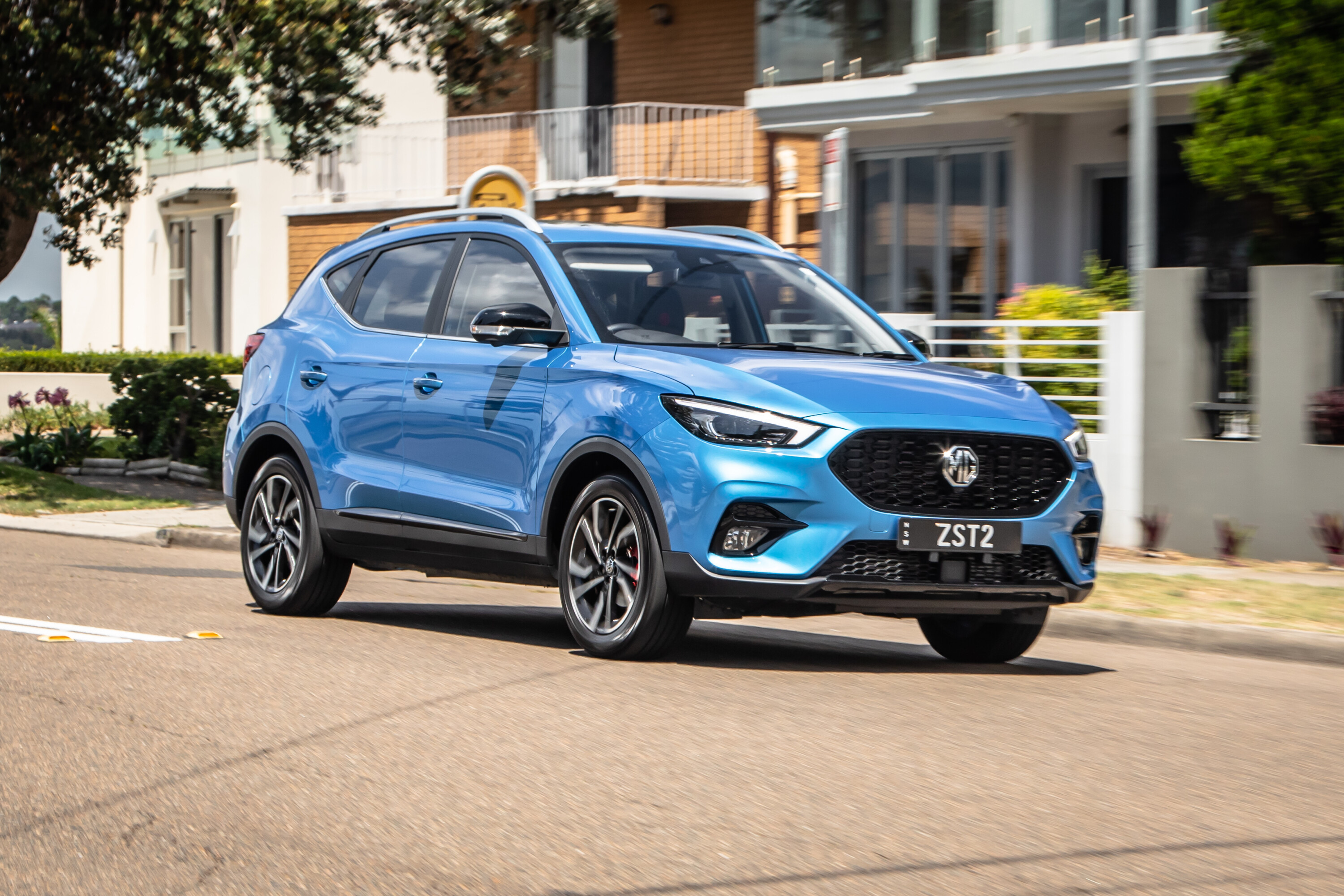
- Price: From $22,888 drive away (Excite)
- Drivetrain: 1.5-litre 4-cylinder NA petrol or 1.3-litre 3-cylinder turbo petrol, 84kW/150Nm or 115kW/230Nm, CVT (NA) or 6-speed auto
- Combined fuel economy, CO2 emissions, fuel type: 6.9-7.3L/100km, 161-162g/km, 91RON
- Warranty: 10-year/250,000km, 12 months of roadside assistance
- Five-year service cost: $1,566 (1.5L – $313 annually), $1,505 (1.3T – $301 annually)
Rating
| Driving | |
|---|---|
| Interior | |
| Practicality | |
| Overall value |
Strengths
- Strong value for money
- Cheap service pricing
- Well featured across the range
Weaknesses
- New ZS is more modern (though more expensive)
- Short 10,000km service intervals
- Lack of physical buttons for features like the AC
The MG ZST debuted locally in 2017 as the ZS and after a few years, the facelifted ZST joined the range with more features, revised styling and a more powerful 1.3-litre turbo-petrol engine at the top of the range. The ZS remained on sale and together, they’ve outsold every other small SUV in Australia since 2021.
Value is undoubtedly the key to the ZST’s success in Australia. Not only is it cheap to buy – especially now in run out – but its 10-year warranty is industry leading and its service pricing is cheap as well. Plus, even the entry-level Vibe is well equipped with features like automatic LED lighting, a 10.1-inch touchscreen with Apple CarPlay and Android Auto and a full active safety suite.
The ZST’s interior is not the most up-to-date but it’s well featured and the material quality is good for the price with a lot of synthetic leather trim around the cabin. Both variants use a 10.1-inch touchscreen that features smartphone mirroring and satellite navigation. It’s not the easiest or fastest system to use, but the screen quality is good.
The driving experience of the ZST is comfortable, though it could be a bit quieter for road noise and the driving position is hampered by a lack of reach adjustment for the steering wheel. The naturally aspirated engine in the ZST Vibe is not the punchiest engine in the world, but it’s fine among the competition for the price – the turbo unit in the Essence is much livelier, if that’s what you’re searching for.
Overall, it’s not difficult to see why the MG ZST has been so popular in Australia. Now that it’s in run out, its pricing is even sharper and it’s one of the few new cars available for under $25,000 drive away. Add in a 10-year warranty, a long list of equipment and a relaxed driving experience and it’s easy to see why it’s been so popular since its release.
GWM Haval Jolion
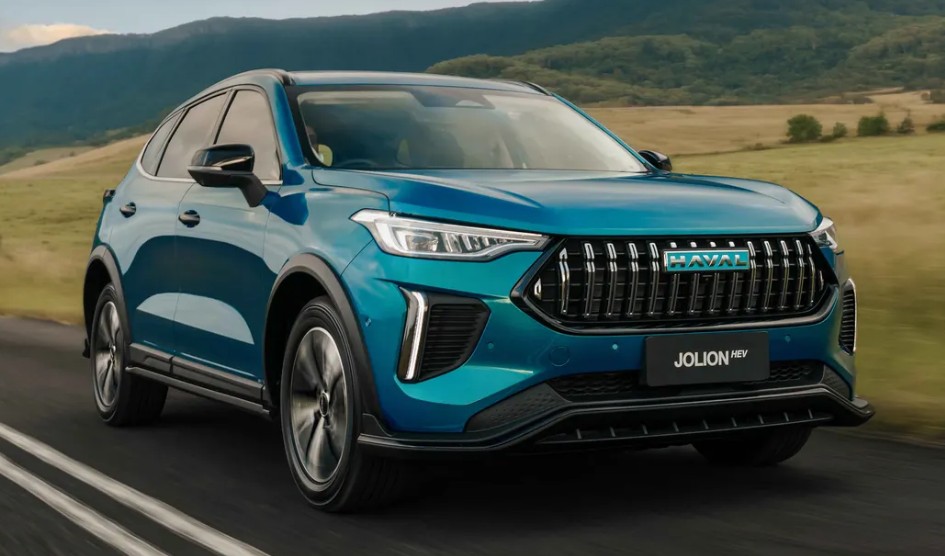
- Price: From $26,990 drive away (Premium)
- Drivetrain: 1.5L turbocharged 4-cylinder petrol, 105kW/210Nm, seven-speed dual-clutch auto
- Combined fuel economy, CO2 emissions, fuel type: 8.1L/100km, 186g/km, 91RON
- Warranty: Seven-year/unlimited km warranty, five years of roadside assistance
- Five-year service cost: $1,840 ($368 per year)
Rating
| Driving | |
|---|---|
| Interior | |
| Practicality | |
| Overall value |
Strengths
- Excellent value for money
- Full safety suite across the range
- Recent facelift has modernised the exterior
Weaknesses
- Strange service intervals
- High fuel consumption
- Cumbersome infotainment system
With 14,238 sales in 2024 alone in Australia, the GWM Haval Jolion was the third-best selling small SUV and it’s easy to see why. Priced from just $26,990 drive away and sporting larger dimensions than a lot of competitors, the Jolion offers a lot of features and metal for the money.
Under the bonnet is a 1.5-litre turbocharged petrol engine that drives the front wheels using a seven-speed dual-clutch transmission. It makes reasonable 105kW and 210Nm outputs, though its 8.1L/100km claimed fuel consumption is the highest of the sub-$30k entrants – and in our experience, it’s likely to be even higher in the real world as well.
The Jolion’s cabin is a mixed bag. The quality is good for the price, and it’s also quite practical and spacious for its size. Though the infotainment screen is good quality, trying to turn the intrusive active safety features off can be difficult at speed thanks to the confusing menus.
The Jolion’s ride and handling balance also trails the class leaders – it’s too softly sprung at times, giving lacklustre body control. The driving position is also compromised thanks to the lack of reach adjustment for the steering wheel and under-thigh angle adjustment for the driver’s seat, which makes you feel as though you’re sitting on the seat, rather than in it.
Still, the Jolion’s value equation is excellent and that’s not just from cheap purchase pricing but also from cheap servicing and a long warranty. It’s easy to see why so many people have bought a Jolion, but as always, make sure you do your research before committing.
Best Small SUV series
Looking to get into a brand-new small SUV? Our stories below will guide you to the model that best suits your needs!



